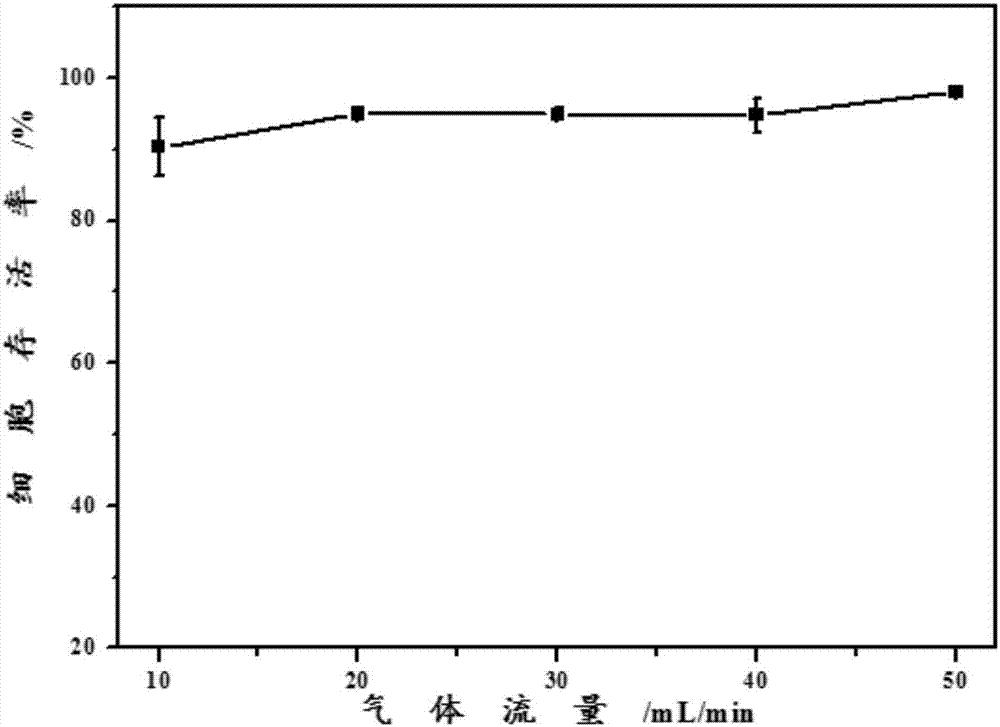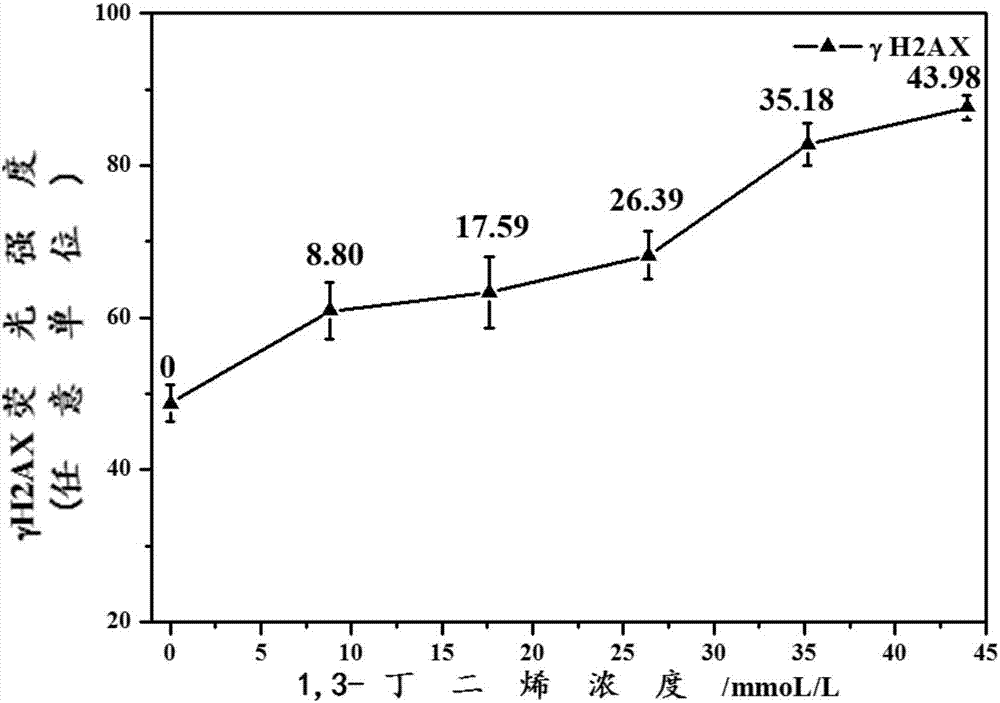Method for quantitatively detecting 1,3-butadiene-induced cell DNA damage in combination with gas-liquid interface exposure system and high-content technology
A quantitative detection and liquid interface technology, applied in the field of genotoxicity determination in vitro, can solve the problems of changing the purpose of detection, difficult to achieve full contact of cells, limited solubility, etc.
- Summary
- Abstract
- Description
- Claims
- Application Information
AI Technical Summary
Problems solved by technology
Method used
Image
Examples
Embodiment 1
[0078] When the metabolic activation system rat liver S9 was not added to the cell poisoning solution, the γH2AX induced by 1,3-butadiene exposure for 1 h was measured.
[0079] Add 0.5 and 2 mL of PBS to the top and bottom of the Transwell plug-in, respectively, and equilibrate for 1-2 hours at 37°C. Aspirate and discard the PBS on the top and bottom of the Transwell plug-in, and add 0.5 mL to the top of the plug-in to a concentration of 4×10 5 A single cell suspension of A549 cells in the logarithmic growth phase was added to the bottom of the plug-in unit with 2 mL of RPMI-1640 medium containing 0.01moL / L HEPES, 2mmoL / LL-glutamine and 10% FBS, and ℃, 5% CO 2 Culture for 24h under conditions.
[0080] Remove the culture solution on the top of the Transwell plug-in, take out the top of the Transwell plug-in and put it into the poisoning chamber of the cell exposure system, so that the permeable filter membrane and the cell staining solution in the Transwell plug-in (also contain 0...
Embodiment 2
[0086] When the metabolic activation system rat liver S9 was added to the cell poisoning solution, the γH2AX induced by 1,3-butadiene exposure for 1 h was measured.
[0087] The experiment process was carried out as described in Example 1. The only difference was that the cell poisoning solution in the poisoning chamber was a mixture of cell culture fluid and 10% S9 mixture, so that the cell poisoning solution contained 1% S9 mixture.
[0088] Figure 4 Shown is the dose-effect relationship curve of γH2AX produced by A549 cells with different concentrations of 1,3-butadiene after adding 1% S9 to the poisoned culture solution, and image 3 The results shown are basically the same.
[0089] The addition of S9 to the cell venom can enhance the metabolic transformation of 1,3-butadiene in vitro. Since 1,3-butadiene is a pre-genotoxic substance, the addition of the in vitro metabolic activation system S9 can avoid the possibility of false negative test results due to insufficient cell met...
Embodiment 3
[0091] When the metabolic activation system rat liver S9 was not added to the cell poisoning solution, the γH2AX induced by 35.18mmoL / L 1,3-butadiene was measured after exposure to 15, 30, 45, 60 and 90 minutes.
[0092] The experiment process was carried out as described in Example 1. The only difference is that the concentration of 1,3-butadiene was fixed at a concentration of 35.18mmoL / L, and the exposure time was 0, 15, 30, 45, 60, and 90 min. .
[0093] Figure 5 Shown is the time-effect relationship curve of 35.18mmoL / L 1,3-butadiene inducing γH2AX produced by A549 cells at 0, 15, 30, 45, 60 and 90 minutes after exposure. It can be seen from the figure that as the exposure time increases, the γH2AX produced by A549 cells gradually increases, showing a significant time-effect relationship. When the exposure time exceeds 60 minutes, the induced γH2AX is more than 1.5 times that of the normal group.
PUM
| Property | Measurement | Unit |
|---|---|---|
| Aperture | aaaaa | aaaaa |
Abstract
Description
Claims
Application Information
 Login to View More
Login to View More - R&D
- Intellectual Property
- Life Sciences
- Materials
- Tech Scout
- Unparalleled Data Quality
- Higher Quality Content
- 60% Fewer Hallucinations
Browse by: Latest US Patents, China's latest patents, Technical Efficacy Thesaurus, Application Domain, Technology Topic, Popular Technical Reports.
© 2025 PatSnap. All rights reserved.Legal|Privacy policy|Modern Slavery Act Transparency Statement|Sitemap|About US| Contact US: help@patsnap.com



